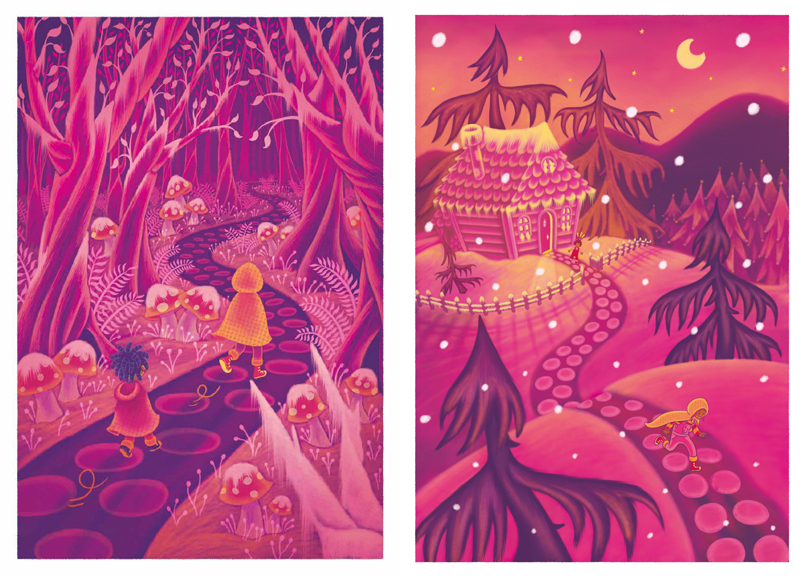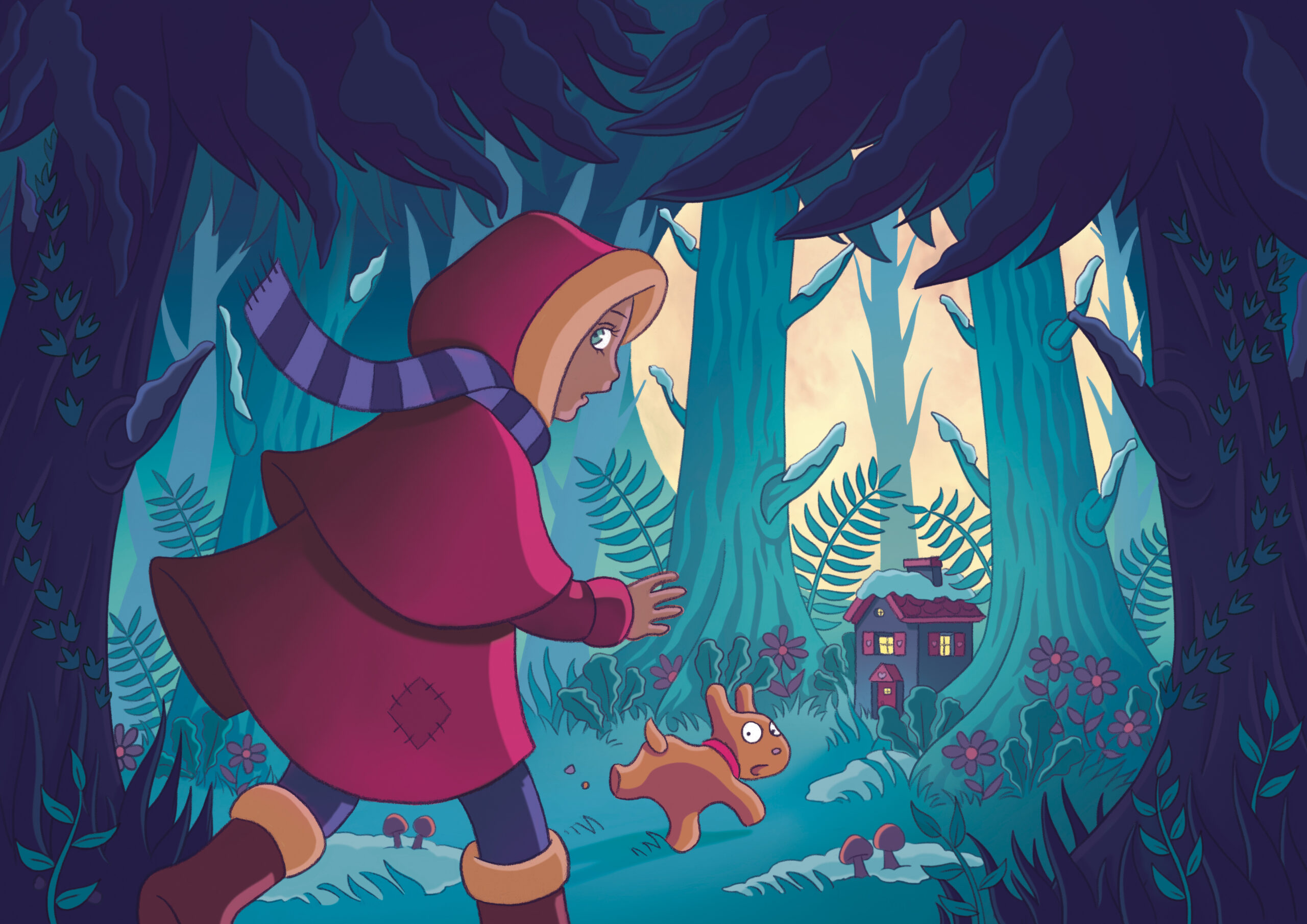How we found a literary agent for graphic novels


Can’t believe September is nearly over! We’ve been busy all summer juggling several projects, including two books for Harper Collins. We also signed with a literary agent: https://www.unitedagents.co.uk/sandra-marrs-and-john-chalmers. Which leads us to today’s topic:
How we found a literary agent for graphic novels:
We’ve just signed with Molly Jamieson at United Agents. Needless to say, we’re pretty excited. After all, we’d been hoping to find representation for some time and recent years have seen growing interest in the graphic novel medium. We’ve had several books published and have also self-published, received awards, great reviews, and yet we were still un-agented. We didn’t know Molly, we didn’t get a referral, and went through the old-fashioned query route (the slush pile).
The first conversation we remember having with an agent was as far back as 2004. Graphic novels were just at the beginning of their rise in the US, and there were very few agents interested in comics. We were hoping to place our Louis books with a publisher, and in a phone conversation, an agent in the US said to John, “These books are great, but they’re no cheap date!” Also, save a few exceptions (like Bone by Jeff Smith), publishers consider self-published books as having already been published, so prefer new material. Over the years we spoke to a small handful of agents, but didn’t really embark on a full-scale pitching mission. One agent did pitch a project for us, which went to an editorial meeting at a medium-sized UK publishing house, but ultimately it wasn’t accepted. Then NY-based publisher Papercutz approached us directly, and this resulted in their releasing three of our graphic novel fairy-tale adaptations. When they asked us to make a fourth book, we decided we really wanted to write new material with a new publisher and that it was time to start focusing full-time on finding the right agent. The pandemic was just starting.
Pitching to agents round one…
The great thing with graphic novels is that you don’t have to complete a whole book before approaching agents. It’s best to just make a pitch packet because it’s too difficult for a publisher to make changes on a finished book (GNs are very time-consuming to make). We worked on a pitch (a story for middle grade readers) for several months, writing a detailed synopsis, a full chapter in comic form, and some character designs, then sent this to a few dozen agents. Result: a big pile of rejections. We hadn’t exactly expected an easy ride, but still, it was disappointing. Then we saw Books to Nourish were running an auction and some of the lots were agent critiques. After a frantic Sunday evening bid action, we won three, and as a result, received very useful feedback on our pitch: one agent was really encouraging (but GNs weren’t their area); two highlighted problems in some aspects of the story; and another agent highlighted problems in some aspects of the art. Well, there was nothing really wrong with the art and story per se, but it just wasn’t quite right for the current market. So, we decided to rework our pitch, and came up with ideas for others too.

We read even more graphic novels (especially middle grade ones) and PW Children’s Bookshelf, joined SCBWI and attended as many webinars with agents, editors and creators as we possibly could. Niki Smith’s https://niki-smith.com/about/graphic-novel-agents was great for identifying agents who represent graphic novels, but we did our own research too. While researching agents, we received an invitation from Janna Morishima to attend the Kids Comics Unite Christmas party on Zoom. We couldn’t make it due to the time difference, but did however join Kids Comics Unite and then the Kids Comics Studio program, a place for like-minded creators to share info and skills, and learn everything from aspects of the craft to publishing and marketing. We wish this kind of platform had existed when we started, it’s such a great place to develop your practice and everyone there is really supportive of each other. We attended three brilliant webinars about pitching graphic novels: two on Kids Comics Studio, one with Janna Morishima, and another with Jonah Newman (GN author and assistant editor at Scholastic), and one by agent Maria Vicente. We read Agents + Books, Kate McKean’s newsletter about demystifying publishing. And a coaching session with Janna Morishima gave us more illuminating feedback on our pitch.
So we brainstormed our way forward with an improved pitch, refining the synopsis, and rewriting and redrawing the first chapter. Sandra freshened up her art style, going back somewhat to the simpler style of our Louis books: clear line, flat colouring, simple shading. It felt liberating! Our last three books had been very time-consuming to produce in terms of art. We created a new website with a new portfolio (https://chalmersandmarrs.com/), and also came up with more ideas for different pitches. Kids Comics Studio members gave us very useful feedback on the art in the “Hot Seat Critique” – one of the many opportunities open to KCS members. A couple of trusted friends, Damien Love (author of the excellent Monstrous Devices) and his partner Alison Stroak (an experienced reader and former bookseller), read our pitch and gave us their feedback, and we made some final minor improvements. Then a coaching session with Emma D. Dryden for further feedback on our pitch and plans helped reassure us we were on the right track and gave us more ideas. Her insights were invaluable.

Pitching to agents round two…
Most of the agents we approached were in the US, but we did query a few in the UK too. The graphic novel market for young readers hasn’t really taken off in the UK in the same way as it has in the US, yet; but we thought there were maybe some signs of hope. As weeks passed, we were still piling up rejections, more than 40 in fact. Authors don’t call it the pitching trenches for nothing! But this time there was some positive feedback, and also requests for full pitch packets. One of our favourite agents was maxed out, another really liked our material but was looking for a different genre (she encouraged us to pitch to her again later), yet another referred us to a colleague… We were bracing ourselves for a possible third round of pitching, with new material, when Molly Jamieson contacted us. We’d queried United Agents during our first round of pitching and had received a polite rejection. We queried again (to a different agent this time) and our pitch eventually found its way to Molly Jamieson who replied with interest and set up a Zoom meeting. We liked her straight away, she likes graphic novels, and she offered representation that day. As the ink was drying on the agreement, another agency expressed interest, but we had already committed to and happy with Molly and United Agents.
So that’s our experience of finding an agent for middle grade graphic novels, but everyone’s experience is unique, so what we’ve written above is not a “how to”. If we had a piece of advice though, it would be: write your best possible pitch, stick to the agents’ guidelines, personalise every query, and persevere. Many agents already have full lists of clients, and have to be very selective about who they take on. A rejection doesn’t necessarily mean that your work is not good enough, it might just mean that the timing isn’t right for a particular agent, or for the market. There are so many variables, and this is a very subjective industry. Bear in mind that response times can vary from very quick to extremely slow!
If you found this newsletter useful or interesting, you’re welcome to share it or leave a comment at the bottom of this page. We’d be happy to answer your questions.
You can also sign up to our newsletter below to read more about our experience making graphic novels.
A big thank you to Creative Scotland for funding us through this period of professional development and for their ongoing support and faith in our work.
Thank you again for reading. Until next time!
PS: Graphic novels we’ve recently devoured: The Baby-Sitters Club adapted from the Ann M. Martin novels by Raina Telgemeier, Gale Galligan, Chan Chau et al.; Click and Camp both by Layla Miller; and The Secret to Superhuman Strength by Alison Bechdel. We share books we like on Twitter once or twice a week.
Best wishes,
John & Sandra